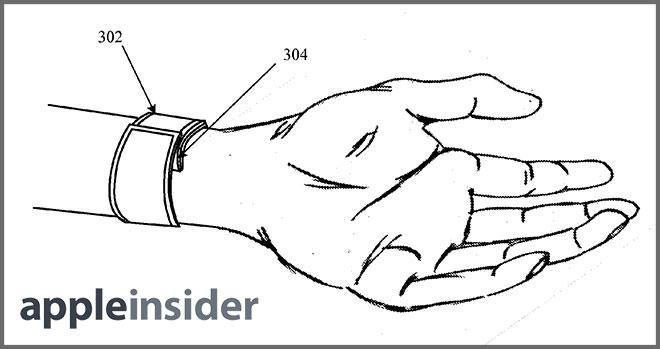A New York Times report published on Sunday claims inside knowledge of Apple's plans for the so-called "iWatch," saying the wearable device will incorporate inductive wireless charging, a curved display and possibly solar panels.

Citing people familiar with Apple's rumored iWatch project, The New York Times reports the company is investigating multiple methods of improving user experience by increasing battery life and ease of charging. Some of the methods described include integrated solar panels and inductive charging, technologies Apple has yet to include in a consumer product.
Power management has become a major hurdle for manufacturers looking to satisfy consumer expectations of generational device overhauls. Many expect new products to have improved performance in smaller form factors while at the same time maintaining, or improving upon, battery life. Unfortunately, battery technology traditionally lags behind performance advancements, prompting companies like Apple to rely on clever hardware and software design to save power.
The publication cites Nest cofounder and "father of the iPod" Tony Fadell as saying Apple tried for years to put a "smarter" battery in the iPhone and iPod product lineups, including solar power technology, but an adequate solution was never found. He notes that a majority of users keep phones and other portables in their pocket or bag, making a light-based charging system somewhat impractical.
While the unnamed source claims one option would be the inclusion of solar cells disposed in a layer of the iWatch display, as seen in a 2013 Apple patent, existing solar technology is not efficient enough to charge a device with the features many expect to come built into the iWatch.
Perhaps the most believable of the source's claims is a magnetic induction charging method, a technology for which Apple has a number of patents. The technology allows a device equipped with special equipment to charge wirelessly when in range of a near-field magnetic resonance (NFMR) transmitter.
Low-power devices like electric toothbrushes have successfully used the technique to trickle charge on-board batteries, while recent advancements have upped power output to levels adequate for charging smartphones. For example, Nokia's Lumia 920 smartphone comes with the tech built-in.
AppleInsider was first to discover what are now being referred to as "iWatch" patents, including a property for a wearable wristwatch design with flexible display and kinetic charging systems.
Illustration of wearable device with display (402), kinetic energy gathering device (502),
wireless antennas (506), connector, (508) and battery (504).
Apple holds a number of exotic power management patents, including a version of the "shake to charge" method readily used in quartz wristwatch designs. While efficient, it remains unclear if the iWatch will sport a chassis large enough to carry a generator and storage system capable of impacting battery performance.
At this point, everything "known" about the iWatch is rumor and speculation as no hard evidence pertaining to the purported device has surfaced. Apple could very well be experimenting with a number of different designs, including solar-powered iterations, but there is no guarantee that such tech will make its way into a final production model.


